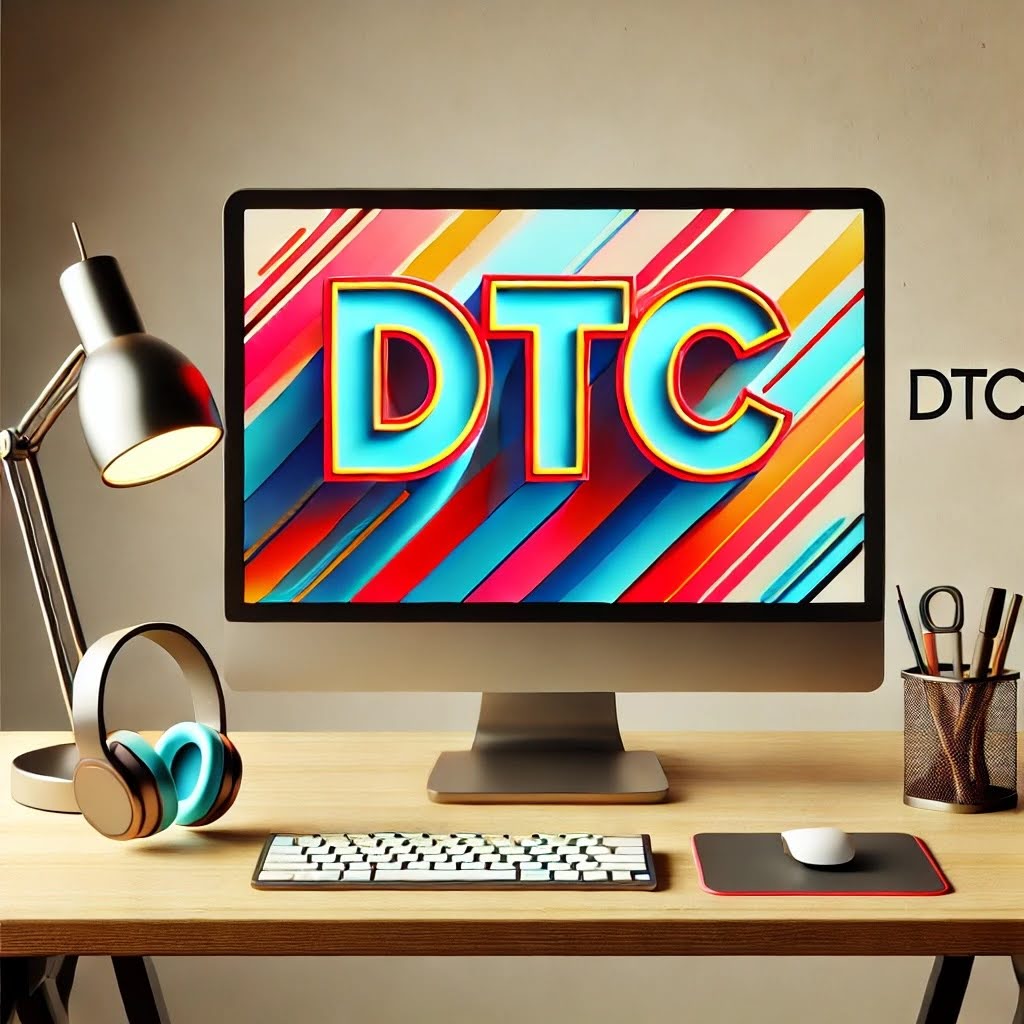The Potential of Direct to Consumer in Ecommerce
February, 2024
Amazon Influencers
Influencer Marketing
Amazon Marketplace
Introduction
Direct to Consumer (DTC) ecommerce is a business model that allows brands to sell their products or services directly to consumers, bypassing intermediaries.
With the rapid growth of global retail ecommerce sales and changing consumer preferences, DTC ecommerce has gained significant traction. This direct-to-consumer approach offers benefits such as increased profit margins, enhanced customer relationships, and data-driven insights.
By leveraging technology and engaging directly with customers, brands can disrupt traditional industries and provide more personalized experiences.
Identification of the Benefits of DTC Ecommerce

Direct to Consumer (DTC) ecommerce offers numerous benefits for both brands and consumers. Let’s explore some of the key advantages of this business model and how it has reshaped the ecommerce landscape.
1. Increased Profit Margins:
One of the primary benefits of DTC ecommerce is the ability for brands to capture a larger share of the profits.
By bypassing intermediaries and traditional retail channels, brands can retain more revenue from each sale. According to a study by consulting firm McKinsey, DTC brands typically enjoy 10-20% higher profit margins compared to those relying on traditional retail channels.
This increased profitability provides businesses with the resources to invest in product innovation, marketing campaigns, and customer support, ultimately enhancing the overall customer experience.
2. Deeper Customer Relationships:
DTC ecommerce enables brands to establish direct connections with their customers, fostering deeper and more meaningful relationships.
By engaging directly with consumers, brands can gather valuable feedback, understand their needs, and personalize their offerings accordingly. This direct feedback loop allows DTC brands to continually improve their products and services, resulting in increased customer satisfaction and loyalty.
According to a study conducted by Forrester Research, DTC brands achieved 1.7 times higher customer retention rates compared to traditional retailers.
This strong bond with customers contributes to long-term success and a dedicated customer base.
3. Enhanced Customizability and Personalization:
With DTC ecommerce, brands have the flexibility to customize their products or services to meet individual customer preferences.
This level of personalization allows brands to create unique and tailored experiences, catering to the diverse needs of their customers. By utilizing data-driven insights and utilizing advanced technologies, DTC brands can deliver personalized recommendations, targeted offers, and relevant content that resonates with their customers.
A survey by Epsilon found that 80% of consumers are more likely to make a purchase when brands offer personalized experiences.
This ability to provide customized offerings distinguishes DTC brands from their competitors and strengthens their position in the market.
4. Valuable Data Insights:
DTC ecommerce provides brands with valuable data insights that can be used to drive smarter decision-making.
With each direct customer interaction, brands gather data on preferences, purchase patterns, and customer demographics. This wealth of information can be analyzed to extract actionable insights and inform strategic business decisions.
By leveraging data analytics tools, brands can optimize marketing strategies, identify new target segments, and discover opportunities for growth.
Access to real-time data enables DTC brands to stay agile and quickly adapt to changing consumer trends and preferences.
5. Disruption of Traditional Industries:
DTC ecommerce has disrupted traditional industries by challenging established players and introducing innovative business models.
This disruption has led to increased competition and greater consumer choice. DTC brands, with their direct relationship with consumers, have been able to offer unique products, competitive pricing, and exceptional customer experiences. This has forced traditional retailers to rethink their strategies and adapt to the changing landscape.
For instance, the eyewear industry witnessed a transformation with DTC brands like Warby Parker, offering affordable and stylish prescription glasses directly to consumers, bypassing traditional optical stores.
These benefits of DTC ecommerce have contributed to its widespread adoption and popularity among both established brands and startups.
By embracing the direct-to-consumer approach, brands can tap into new revenue streams, build stronger customer relationships, drive innovation, and gain a competitive edge in the ever-evolving ecommerce marketplace.
Understanding the Key Components of a Successful DTC Strategy
Implementing a successful Direct to Consumer (DTC) strategy requires careful consideration of several key components. In this section, we’ll explore these components and their significance in building a thriving DTC business.
1. Seamless Ecommerce Platform:
A robust and user-friendly ecommerce platform is critical for DTC brands.
It serves as the foundation for online sales, customer interactions, and brand experience. The platform should offer a smooth and seamless purchasing process, excellent product presentation, and secure payment options to instill trust in customers.
According to Statista, the global ecommerce market is expected to reach $6.54 trillion in 2022, highlighting the significance of a well-designed and agile ecommerce platform
2. Compelling Brand Storytelling:
DTC brands should prioritize crafting a compelling brand narrative that resonates with their target audience.
Successful DTC brands understand the importance of connecting with customers on an emotional level, and storytelling is a powerful tool for achieving this. By sharing authentic stories and highlighting the brand’s mission or values, DTC brands can forge an emotional connection with customers and stand out in a crowded marketplace.
According to a survey by Sprout Social, 91% of consumers are more likely to engage with brands that share authentic stories.
3. Effective Digital Marketing:
Digital marketing plays a crucial role in the success of DTC brands. With increasing competition, it’s essential to leverage various digital channels to promote brand awareness and drive customer acquisition.
Successful DTC brands utilize a combination of strategies like search engine optimization (SEO), social media marketing, content marketing, and influencer collaborations to reach their target audience.
According to a report by eMarketer, digital advertising spend is projected to reach $389 billion worldwide in 2021, emphasizing the importance of an effective digital marketing strategy.
4. Customer-centric Approach:
A customer-centric approach is at the heart of a successful DTC strategy.
DTC brands prioritize understanding their customers’ needs, preferences, and pain points. By gathering customer feedback through direct interactions and data analysis, brands can tailor their products, services, and marketing efforts to meet customer expectations.
A study by Accenture found that 91% of consumers are more likely to shop with a brand that recognizes, remembers, and provides relevant offers and recommendations.
5. Strong Supply Chain Management:
Efficient supply chain management is crucial for DTC brands to ensure timely delivery and customer satisfaction.
Brands must establish partnerships with reliable logistics providers and optimize their inventory management. With the rise in same-day or next-day delivery expectations, effectively managing the supply chain is more important than ever.
A survey by Temando revealed that 80% of consumers expect same-day shipping, while 61% are likely to abandon their purchase if their preferred delivery option is not available.
6. Data-driven Decision Making:
Data is a valuable asset for DTC brands.
By analyzing customer data, brands can gain actionable insights, make informed decisions, and drive continuous improvement. Data-driven decision making allows DTC brands to identify trends, optimize marketing strategies, personalize customer experiences, and measure their business performance.
According to a study by Forbes, companies that adopt data-driven marketing strategies are six times more likely to be profitable year-over-year.
By incorporating these key components, DTC brands can establish a solid foundation for success in the highly competitive ecommerce landscape.
A seamless ecommerce platform, compelling brand storytelling, effective digital marketing, a customer-centric approach, strong supply chain management, and data-driven decision making are essential pillars for building a sustainable and thriving DTC business.

Unlock the Power of Micro Influencers and Elevate your Brand Today!

Exploring Different DTC Business Models

Direct-to-Consumer (DTC) brands have revolutionized the retail industry by eliminating the need for intermediaries and establishing a direct connection with customers. In this section, we’ll explore different DTC business models, each offering unique advantages and catering to diverse consumer needs.
1. Vertical Integration:
The vertical integration model involves DTC brands owning and controlling the entire supply chain, from manufacturing to distribution.
By cutting out middlemen, these brands can maintain control over product quality, pricing, and customer experience. Companies like Warby Parker and Dollar Shave Club have successfully adopted this model, enabling them to offer high-quality products at more affordable prices.
According to Digital Commerce 360, vertical integration can lead to increased profitability, with DTC brands achieving gross margins of up to 75%.
2. Subscription Services:
Subscription-based DTC models have gained significant popularity in recent years.
These businesses offer curated product boxes or regular deliveries of specific items to their subscribers. By providing a personalized experience and convenience, subscription services appeal to customers seeking discovery and convenience. Industry leaders like Birchbox and Stitch Fix have embraced this model, benefiting from recurring revenue streams and higher customer loyalty.
According to McKinsey, the subscription e-commerce market has seen substantial growth, with sales increasing by more than 100% annually over the past five years.
3. Online Marketplaces:
DTC brands can leverage online marketplaces like Amazon, eBay, and Etsy to reach a wider audience and gain exposure.
Selling through these platforms provides access to a vast customer base and takes advantage of the marketplace’s established infrastructure. However, the challenge lies in differentiating the brand and competing against other sellers. While marketplaces can offer substantial sales growth opportunities, it’s essential for DTC brands to build a strong brand identity and deliver exceptional customer experiences to stand out.
According to Marketplace Pulse, Amazon’s third-party sellers accounted for 58% of gross merchandise sales on the platform in 2020.
4. Brick-and-Click:
The brick-and-click model integrates traditional brick-and-mortar retail with an online presence. This hybrid approach allows DTC brands to provide customers with the convenience of online shopping while offering the in-person experience of physical stores.
Brands like Glossier and Nike have transformed their online success into brick-and-mortar ventures, recognizing the importance of offline engagement in building brand loyalty.
Research by Harvard Business Review found that omnichannel customers spend an average of 4% more on every shopping occasion in-store and 10% more online compared to single-channel customers.
5. Social Commerce:
Social media platforms are increasingly becoming a hub for DTC brands to engage with customers and drive sales.
The social commerce model capitalizes on the vast user bases and advanced targeting capabilities of platforms like Instagram, Facebook, and TikTok. By showcasing products directly on these platforms and leveraging influencer partnerships, DTC brands can reach highly relevant audiences and create a seamless shopping experience.
According to eMarketer, social commerce sales in the United States are projected to reach $36.62 billion in 2021.
Each DTC business model offers its own advantages and considerations.
When choosing a model, a brand should consider factors such as the product type, target audience, operational capabilities, and growth objectives.
By aligning the chosen business model with these factors, DTC brands can maximize their potential for success in a rapidly evolving retail landscape.
Analyzing Success Stories: Case Studies of DTC Brands
Direct-to-Consumer (DTC) brands have disrupted traditional retail models and achieved remarkable success in a relatively short period. In this section, we’ll analyze case studies of DTC brands that have flourished by leveraging innovative strategies and customer-centric approaches.
Casper, a mattress-in-a-box company, revolutionized the sleep industry by offering a hassle-free purchasing experience and high-quality products.
With a strong DTC model, Casper disrupted the traditional mattress industry dominated by brick-and-mortar stores. By offering a 100-night trial, free shipping, and hassle-free returns, Casper gave customers the confidence to purchase their mattresses online.
According to Inc., Casper’s revenue skyrocketed from $1 million in 2014 to $250 million in 2016. Their success was fueled by a strong emphasis on customer satisfaction and creating a differentiated brand experience.
Glossier, a beauty and skincare brand, gained immense popularity by building a community-driven brand through social media and customer engagement.
By leveraging user-generated content and feedback, Glossier created a sense of inclusivity and authenticity that resonated with their target audience. Glossier’s innovative approach to marketing and product development allowed them to connect intimately with customers and build a loyal following.
According to CNBC, Glossier reached a valuation of $1.2 billion in 2019. Their success showcases the power of community-building and user-generated content in driving DTC growth.
Allbirds, a sustainable footwear brand, prioritizes environmental sustainability and material innovation.
By using renewable materials like merino wool and eucalyptus tree fiber, Allbirds gained a competitive advantage in the market. Their commitment to producing comfortable, eco-friendly shoes struck a chord with consumers seeking sustainable alternatives.
Allbirds achieved rapid growth, with CNBC reporting their revenue exceeding $100 million in 2018. Their success demonstrates the potential of combining sustainability with a customer-centric approach in the DTC space.
Dollar Shave Club disrupted the razor industry by offering affordable, high-quality razors delivered directly to customers’ doorsteps on a subscription basis.
Their witty marketing campaigns and emphasis on convenience resonated with a broad audience. Dollar Shave Club’s innovative subscription model propelled their growth, and they were able to gain a significant market share.
According to The New York Times, Unilever acquired Dollar Shave Club for $1 billion in 2016. Their success illustrates the power of subscription-based models and disruptive marketing strategies.
Warby Parker revolutionized the eyewear industry by offering fashionable, affordable glasses online.
By cutting out the middlemen and designing their products in-house, Warby Parker was able to offer high-quality eyewear at lower prices compared to traditional retailers. Additionally, their philanthropic mission of donating a pair of glasses for every purchase resonated with socially conscious consumers. Warby Parker’s success was remarkable, as Forbes reported reaching a valuation of $1.75 billion in 2018. Their story showcases how a customer-centric approach, coupled with a social mission, can drive success in the DTC space.
These case studies highlight the diverse strategies that led to the success of these DTC brands.
From prioritizing customer satisfaction to embracing sustainability and leveraging social media, each brand achieved significant growth by offering unique value propositions and connecting deeply with their target audiences.
Conclusion To The Potential of Direct to Consumer (DTC) In Ecommerce
The rise of Direct-to-Consumer (DTC) brands has revolutionized ecommerce by enabling businesses to connect directly with customers, offering them a unique and personalized shopping experience.
This shift empowers brands to cultivate closer customer relationships, control their brand narrative, and make data-driven decisions. DTC brands benefit from having complete control over every aspect of their branding, from website design to customer service, ensuring a consistent brand experience and the flexibility to quickly adapt to market changes.
Additionally, direct access to customer data allows for optimized marketing efforts and an enhanced understanding of consumer behaviors. This agility in innovation and responsiveness to trends gives DTC brands a significant advantage in the market.
As consumer preferences continue to evolve towards valuing convenience, personalization, and authenticity, embracing the DTC model can provide a sustainable competitive edge, fostering growth and deepening customer loyalty.
Want new articles before they get published?
Subscribe to our Awesome Newsletter.
Want new articles before they get published? Subscribe to our Awesome Newsletter.
stack up your influence
turning creativity into currency
our headquarters
111 NE 1st St, Miami, FL 33132
our contact info
[email protected]
stack up your influence
turning creativity into currency
our headquarters
111 NE 1st St, 8th Floor
Miami, FL 33132

